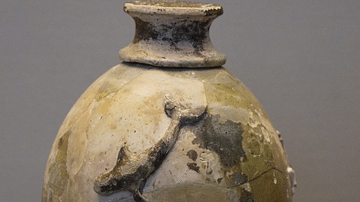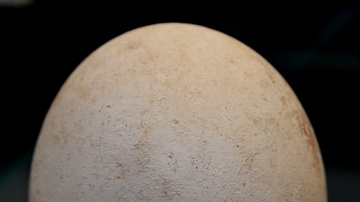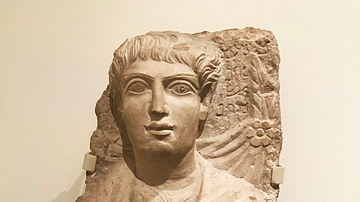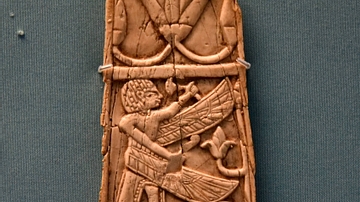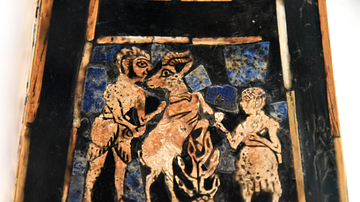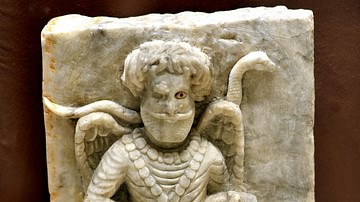Illustration
This burned ivory figure, carved in the round, depicts a male figure carrying a goat on his shoulders and holding an ostrich by the neck. The depiction is very realistic; the beak of the ostrich is opened and the front wing is held upwards, giving the appearance of fluttering. The man's overall depiction (features, dress, and hairstyle) refers to a Mediterranean origin, probably Syrian, carrying a tribute. Excavated by the British School of Archaeology in Iraq.
From Room NE2 at Fort Shalmaneser, Nimrud, Iraq (a remarkable group of ivories was found in this room and is the only set from Nimrud carved in the round). Neo-Assyrian period, 9th to 7th century BCE. On display at the Iraq Museum in Baghdad, Republic of Iraq.
About the Author
References
World History Encyclopedia is an Amazon Associate and earns a commission on qualifying book purchases.Cite This Work
APA Style
Amin, O. S. M. (2019, June 08). Ivory Figure of Syrian Man with an Ostrich & Goat, Nimrud. World History Encyclopedia. Retrieved from https://www.worldhistory.org/image/10893/ivory-figure-of-syrian-man-with-an-ostrich--goat-n/
Chicago Style
Amin, Osama Shukir Muhammed. "Ivory Figure of Syrian Man with an Ostrich & Goat, Nimrud." World History Encyclopedia. Last modified June 08, 2019. https://www.worldhistory.org/image/10893/ivory-figure-of-syrian-man-with-an-ostrich--goat-n/.
MLA Style
Amin, Osama Shukir Muhammed. "Ivory Figure of Syrian Man with an Ostrich & Goat, Nimrud." World History Encyclopedia. World History Encyclopedia, 08 Jun 2019, https://www.worldhistory.org/image/10893/ivory-figure-of-syrian-man-with-an-ostrich--goat-n/. Web. 19 Apr 2025.



